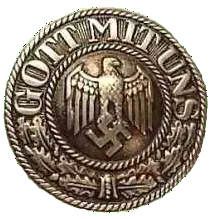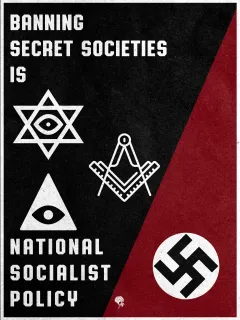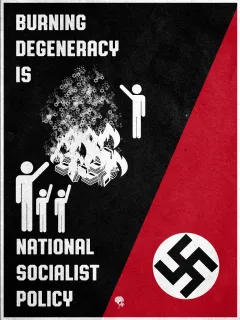Georg Lukács
Hungarian literary historian, essayist, critic, an influential and controversial figure in the Western Marxist tradition. Although Lukács supported the aesthetic doctrine of socialism realism, most of his life Lukács was viewed with suspicion by Communist Party ideologists. Lukács's History and Class Consciousness (1923) was attacked by the Russian Communist Party leaders and Lukács later regretted the "messianic utopianism" of this work. Lukács's aesthetics that opposed political control of artists was hailed by the New Left intellectuals in the 1960s.
"In the writing of the Stalinist period, however, the real problems were overlooked and - as with economic subjectivism - the correctness of particular solutions became a matter for dogmatism. Literature ceased to reflect the dynamic contradictions of social life; it became the illustration of an abstract "truth." The aesthetic consequences of such an approach are all too evident. Even where this "truth" was in fact true and not, as so often, a lie or a half-truth, the notion of literature-as-illustration was extremely detrimental to good writing." (from The Meaning of Contemporary Realism, 1962)
György Szegedy von Lukács (also known as Georg Lukács) was born in Budapest into a wealthy Jewish family. His father was a prominent Hungarian banker: his mother came from Vienna. Lukács studied at the universities of Budapest and Berlin, receiving his Ph.D. in 1906. After travels in Italy, he lived in Heidelberg from 1912 to 1916 and studied privately with Heinrich Rickert. During this period he became associated with the German sociologist Max Weber (1864-1920). In his early point of career Lukács described himself as a "subjective idealist" and his writings showed interest in neo-Kantian thought, fashionable in pre-First World War Central European intellectual circles. From The Theory of the Novel (1920) Hegel remained for Lukács a lifelong source of inspiration.
After conversion to Marxism and historical materialism, Lukács still developed among others Weber's ideal type methodology. In 1917 Lukács returned to Budapest. where he became the leading figure of The Budapest Sunday Circle. The group included Karl Mannheim, the art historian Arnold Hauser, the writers Béla Balázs and Anna Leznai, and the musicians Béla Bartók and Zoltán Kodály. Usually the group met at Balázs's elegant apartment or the Lukács's country estate and discussed about the end of the liberal society. Most of the members of the group left Hungary after the revolution of 1919.
"If Faust could have two souls within his breast, why should not a normal person unite conflicting intellectual trends within himself when he finds himself changing from one class to another in the middle of a world crisis ? In so far as I am able to recall those years, I, at least, find that my ideas hovered between the acquisition of Marxism and political activism on the one hand, and the constant intensification of my purely idealistic ethical preoccupations on the other." (from History & Class Consciousness, Preface to the New Edition, 1967)
World War I had radicalized Lukács's thinking and he joined in 1918 the newly formed Hungarian Communist Party. However, before this decision he had doubted that Bolshevism can bring any good out of evil. After changing his view Lukács accepted that terror was legitimate in the socialist context. Lukács became Commissar of Public Education during Béla Kun's short-lived government. When the Hungarian Communist Republic was overthrown by Romanian troops, Lukács fled to Austria and Kun to the Soviet Union where he died in one of the Stalinist purges before World War II. In his diary Balász described Lukács's haunted appearance in Vienna – he was "deathly pale, hollow cheeked, impatient and sad", and who went "around with a gun in his pocket", tracking down people who have disappeared with party funds. Lukács was also portrayed by Thomas Mann in The Magic Mountain, in which the Jewish-Jesuit character, Naphta, was partly modelled on him.
Lukács's marriage to Ljena Grabenko, a Russian emigrant, ended after some years, and in 1919 he married Gertrud Bortstieber. From 1919 to 1929 Lukács lived in Vienna, where he published History and Class Consciousness (1923), a collection of essays about literature and politics. The work was born under a highly contradictory amalgam of theories from Kierkegaard to Hegel and from Marx to Georges Sorel and Rosa Luxemburg. In it Lukács argued that consciousness depends upon class position: different classes have different forms of consciousness, but only proletariat's point of view coincides with objectivity and truth. In freeing itself, the proletariat frees mankind: its class interest converges with Hegelian teleology of history itself. Socialism would abolish alienation which Lukács identified with objectification, particularly as a societal category. Later in his preface to the new edition of the book (1967), Lukács wrote: "...objectification is indeed a phenomenon that cannot be eliminated from human life in society. If we bear in mind that every externalisation of an object in practice (and hence, too, in work) is an objectification that every human expression including speech objectifies human thoughts and feelings, then it is clear that we are dealing with a universal mode of commerce between men."
History and Class Consciousness was attacked by Lenin and Grigory Zinovyev (1883-1936) and other leaders of the Russian Communist party; the seminal work wrecked Lukács's political career. He repudiated it in a public confession in the 1930s, the period of Stalin's show trials, and saved himself from the fate of Zinovyev who was executed in 1936. In 1929-30 Lukács was associated with the Marx-Engels-Lenin Institute in Moscow. He then lived in Berlin for a few years. After Hitler was elected chancellor of German in 1933, Lukács emigrated to the Soviet Union where he worked as a researcher at the Institute of Philosophy of the Soviet Academy of Sciences.
After World War II Lukács returned to Hungary, where he was professor of aesthetics and cultural philosophy at the University of Budapest from 1945 to 1956. He served as editor of the journal Forum and advocated "socialist humanism" in the arts. In 1949 opposition political parties were outlawed and the Hungarian Communist Party proclaimed Hungary a People's Republic. During the Rákosi era Lukács focused mostly on scientific research. One of his major works was Die Zerstörung der Vernuft (1954), a book against irrationalism. In 1956 he demanded the renaissance of Marxism against Stalinist dogmatism in a speech he made in the Petöfi-circle, which later has been called as "unintended initiator of the Hungarian Revolution". Lukács's writing did not gain the approval of the new authorities and József Révai, the chief ideologist of the Party, attacked Lucács's "bourgeois realism." In 1956, when the reformist prime minister Imre Nagy declared Hungary neutral, he was appointed Minister of Culture. However, Soviet troops destroyed the unplanned uprising in November. Some 200,000 Hungarians fled the country, Nagy was executed, and Lukács was deported for a while to Romania. He was allowed to return to Budapest in 1957, and after attacks on him in 1958 he regained political favor in mid-1960s. Lukács died on June 4, 1971 in Budapest, where he was buried with all due Party honors. His last major work was Zur Ontologie des gesellschaftslichen Seins (1971-1973). Lukács aesthetic theories have influenced Walter Benjamin (1892-1940), Frankfurt School, and the French-Romanian theorist Lucien Goldman (1913-1970), who devised the method of literary analysis known as "genetic structruralism", which sought to identify homologies or structural parallels between literary texts and the worldviews of key social groups contemporary with the texts.
"Lukács until his death clung to an ideology which seems more and more utopian: a vision of a social paradise, of the end of the alienation of man for which there is no evidence in any Communist or other society. As a character in The First Circle remarks: "if you always look over your shoulder how can you still remain a human being?" Lukács looked or had to look over his shoulder all his adult life and found solace only in a distant messianic hope." (René Wellek in A History of Modern Criticism 1970-1950, vol. 7, 1991)
Lukács's first important study of aesthetics was published in 1909 in the Budapest review Nyugat. His early writings reveal the immense amount of reading, which he had undertaken from his youth. Lukács was early interested in theatre, he had read hundreds of plays and at the age of seventeen he went to Olso to see Ibsen. He also translated Ibsen's play The Wild Duck. Poetry did not interest him much, his main concerns were the drama and the epic. A lélek és a formák (1910, Soul and Form), a collection of essays, established his literary reputation. Partly the work was a result of his tragic love affair with Irma Seidler, who committed suicide, but also is was a product of Lukács's early friendship with Max Weber and Georg Simmel. In the Kierkegaard-Regine Olsen relationship he saw connections to his own experiences with Seidler. In an essay on Kierkegaard Lukács declared: "There is no system in life. In life there is only the separate and individual, the concrete. To exist is to be different."
Lukács two lecture series for Heidelberg, Philosophie der Kunst (1912-1914) and Heidelberger Aesthetik (1916-1918) were born under the influence of neo-Kantianism. Theorie des Romans, written in 1914-15 and published in book form in 1920, showed Lukács's interest in Hegel, but also to Schiller's Über naive und sentimentalische Dichtung, which contrasts the ideal world, found in the ancient past, and the modern world.
In The Historical Novel, written in 1936-37, Lukács started from Sir Walter Scott's novels to show the historical consciousness in literature. Lukács did not consider Scott a romantic but a great realist, who depicted the conflict of classes. After 1948 the historical novel declined but showed again revival in the works of Anatole France, Romain Rolland, and Heinrich Mann.
In the 1960s Lukács became interested in the works of Solzhenitsyn and praised his work as a "rebirth of noble beginnings of Socialist Realism." Although Lukács was a supporter of the official Soviet aesthetic doctrine of social realism, he did not accept it wholeheartedly, but deloped his own version known as "critical realism". Realism was not for Lukács a "style" but "the basis of every literature" (in Probleme des Realismus). He opposed modernism, and attacked such writers as Joyce and Kafka for making technique an end itself – and nearly all major avant-garde writers in Western literature who deviated from nineteenth-century Realism. He also criticized Bertolt Brecht's dramatic theories in 1934. Brecht was greatly upset and answered with cryptic critique of Lukács, playing with the connotations of 'realism', 'formalism' and 'popular': "If someone makes a statement which is untrue – or irrelevant merely because it rhymes, then he is a formalist. But we have innumerable works of an unrealistic kind which did not become so because they were based on an excessive sense of form..." (Pictures of Reality by Terry Lovell, 1980)
"Today the primacy of the object and aesthetic realism are almost absolutely opposed to each other, and indeed when measured by the standard of realism: Beckett is more realistic that the socialist realists who counterfeit reality by their very principle. If they took reality seriously enough they would eventually realize what Lukács condemned when during the days of his imprisonment in Romania he is reported to have said that he had finally realized that Kafka was a realist writer." (Adorno in Aesthetic Theory, 1997)
In his discussion of 'reification' Lukács was among the first to re-introduce the idea of alienation as central to Marx's thought. According to Lukács, the formal fragmentation of modernist texts participate in the process of reification. Realism is the only literary mode capable of representing the totality of society. Bourgeois thought is repeated in naturalism and subjectivism. Naturalism is degraded form of realism and limits itself to description instead of narration. Subjectivist art elevates art as the product of the superior subjective consciousness of the creative artist. "The goal of art is to provide a picture of reality in which the contradiction between appearance and reality, the particular and the general, the immediate and the conceptual, etc., is so resolved that the two converge into a spontaneous integrity... The Universal appears as a quality of the individual and the particular, reality becomes manifest and can be experienced within appearance." (Lukács in Writer and Critic, 1970, from Pictures of Reality by Terry Lovell, 1980)
For further reading: Georg Lukács' Marxism by Victor Zitta (1964); Georg Lukács by G. Lichtheim (1970); Georg Lukács: The Man, His Work and His Ideas, ed by G.H.R. Parkinson (1970); Against the Self-Images of the Age by Alasdair MacIntyre (1971); Lukács Concept of Dialectic, with Biography, Bibliography and Documents by I. Mészáros (1972); Georg Lukács by E. Bahr and E, Kunzer (1972); A filozófus Lukács by T. Hanák (1974); The Aesthetics of Georg Lukács by B. Királyfalvi (1975); The Young Lukács and the Origins of Western Marxism by A. Arato and P. Breines (1979); Lukács, Marx and the Sources of Critical Theory by Andrew Feenberg (1981); Four Critics by René Wellek (1981); Georg Lukács, ed. by É Fekete and E. Karádi (1981); The Young Lukács by Lee Congdon (1983); The Philosophy of the Novel by J.M. Bernstein (1984);George Lukács and his Generation, 1900-1918, by Mary Gluck (1985); George Lukács and his World, ed. by Ernest Joos (1987); George Lukács, ed. by Judith Marcus and Zoltan Tarr (1989); Georg Lukács by Arpad Kadarkay (1991) - For further information: Georg Lukacs Archive - Georg Lukács: The Antinomies of Melancholy
Selected works:
- Die Seele und die Formen, 1911 (A lélek és a formák) - Soul and Form (translated by Anna Bostock)
- Esztétikai kultúra, 1913
- Taktika és ethika, 1919 - Revolution and Revelation (ed., transl., intr. by Victor Zitta) / Tactics and Ethics: Political Essays, 1919-1929 (ed. by Rodney Livingstone, tr. by Michael McColgan)
- Die Theorie des Romans, 1920 - The Theory of the Novel (tr. by Anna Bostock)
- Geschichte und Klassenbewusstsein, 1923 - History and Class Consciousness (tr. by Rodney Livingstone)
- Lenin: Studie über den Zusammenhang seiner Gedanken, 1924 - Lenin: A Study on the Unity of His Thought (tr. by Nicholas Jacobs)
- Moses Hess und die Probleme der idealistischen Dialektik, 1926
- Balzac, Stendhal, Zola, 1945
- Goethe und seine Zeit, 1947 (Goethe és kora) - Goethe and His Age (translated by Robert Anchor)
- Irodalom és demokrácia, 1947
- A polgári filozófia válsága, 1947
- A polgár nyomában: a hetvenéves Thomas Mann, 1947 - Essays on Thomas Mann (tr. by Stanley Mitchell)
- A történelmi regény, 1947 - The Historical Novel (tr. by Hannah and Stanley Mitchell)
- Schcksalswende: Beiträge zu einer deutschen Ideologie, 1948
- Existentialisme ou marxisme?, 1948
- A realizmus problémái, 1948
- Új maguar kultúráért, 1948
- Karl Marx und Friedrich Engels als Literaturhistoriker, 1948
- Der junge Hegel, 1948 - The Young Hegel (tr. by Rodney Livingstone)
- Essays über Realismus, 1948 - Essays on Realism (ed. by Rodney Livinsgtone, tr. by David Fernbach)
- Der russische Realismus in der Weltliteratur, 1949 - (in Essays on Realism; partial tr. in Studies in Europen Realism, 1964)
- Studies in European Realism: A Sociological Survey of the Writings of Balzac, Stendhal, Zola, Tolstoy, Gorki, and Others, 1950 (tr. by Edith Bone)
- Deutsche Realisten des 19. Jahrhunderts, 1951 - German Realists in the Nineteenth Century (ed. by Rodney Livingstone)
- Balzac und die französische Realismus, 1952 (partial tr. in Studies in Europen Realism, 1964)
- Puschkin-Gorki (Zwei Essays), 1952
- Nagy orosz realisták, 1952
- Skizze einer Geschichte der neueren deutschen Literatur, 1953
- Adalékok az esztétika történetéhez, 1953
- Beiträge zur Geschichte der Äesthetik, 1954
- Die Zerstörung der Vernuft, 1954 (Az ész trónfosztása) - The Destruction of Reason (translated by Peter Palmer)
- Probleme des Realismus, 1955
- Wider den missverstandenen Realismus, 1958 - Realism in Our Time: Literature and the Class Struggle (tr. 1964) / The Meaning of Contemporary Realism (tr. by John and Necke Mander)
- Schriften zur Literatursoziologie, 1961 (ed. by Peter Ludz)
- Werke, 1962-1981 (17 vols.)
- Die Eigenart des Äeshetischen, 1963 (2 vols.)
- Deutche Literatur in zwei Jahrhunderten, 1964
- Von Nietzsche zu Hitler; oder, Der Irrationalismus und die deutsche Politik 1966
- Über die Besonderheit als Kategorie der Äesthetik, 1967
- Ausgewählte Schriften, 1967-70 (4 vols.)
- Die Grablegung des alten Deutschland, 1967
- Schriften zur Ideologie und Politk, 1967
- Gespräche mit Georg Lukács, 1967 - Conversations with Lukács (ed. by Theo Pinkus, tr. by David Fernbach)
- Solschenizyn, 1970 - Solzhenitsyn (tr. by William David Graf)
- Writer and Critic, and Other Essays, 1971 (ed. and tr. by Arthur D. Kahn)
- Zur Ontologie des gesellschaftslichen Seins, 1971-1973 (3 vols.) - The Onthology of Social Being: 1. Hegel; 2. Marx; 3. Labour (translated by David Fernbach)
- Political Writings, 1919-1929, 1972 (ed. by Rodney Livingstone)
- Marxism and Human Liberation, 1973 (ed. by E. San Juan, Jr.)
- Heidelberger Philosophie der Kunst: 1912-1914, 1974 (Frühe Schriften zur Ästhetik I)
- Heidelberger Äeshetik: 1916-1918, 1975 (Frühe Schriften zur Ästhetik II)
- Politische Aufsätze, 1975-1977 (3 vols.)
- Kunst und objective Wahrheit, 1977
- Essays on Realism, 1980 (ed. by Rodney Livingstone)
- Entwicklungsgeschichte des modernen Dramas, 1981
- Gelebtes Leben, 1981 - Record of a Life: An Autobiographical Sketch (translated by Rodney Livingstone)
- Selected Correspondence 1902-1920, 1986 (tr. by Judith Marcus and Zoltán Tar)
- Theory, Culture, and Politics, 1989 (ed. by Judith Marcus and Zoltan Tarr)
- The Lukács Reader, 1995 (ed. by Arpad Kadarkay)
- Chvostismus und Dialektik, 1996 (written 1925-26) - A Defence of History and Class Consciousness (tr. by Esther Leslie)


























